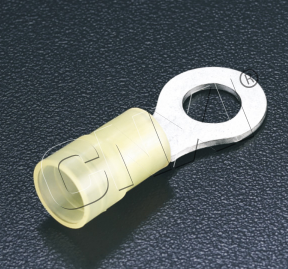Analysis of Common Problems in Cold-Pressed Terminals
The application of cold-pressed terminal blocks has become more and more widespread. As a connector-type accessory product, it has been applied to various electrical connection fields. This is mainly due to the increase in the degree of industrial automation that has led to cold-pressed terminals. The use of the head.
Of course, all electrical and industrial fields are relatively strict and precise in terms of the requirements for accessories. Therefore, when we apply cold-pressed terminal blocks, we need to ensure the high-quality performance of the cold-pressed terminal blocks. The more important among the terminals is the insulation and electrical conductivity, which are determined by the insulation material and the conductive components on the top of the cold-press terminal. Therefore, we should conduct inspection and analysis of these two components before using the cold-pressed terminal, so as to ensure the reliability of the cold-pressed terminal.

Of course, even if these precautions are taken in advance, the cold-pressed terminal block is only a product, and it will encounter some problems in the use process. Therefore, prevention and follow-up maintenance should be prepared so that the entire cold-press terminal can be better applied. Next, I will give you a detailed analysis from several issues that are common to cold-pressed terminals.
The first problem is the poor contact of the cold-pressed terminal head during use. The most critical factor causing this problem is the cold pressing of the metal conductor inside the terminal head, so we are choosing cold-pressed terminal heads. The time should also choose some internal structure is relatively good, the use of materials and processing processes are more sophisticated cold-pressed terminal block, so that can make the cold-pressing terminal head in the conductive performance and contact force to maintain a stable and reliable state. Some designs are unreasonable, the materials used are poor, and the cold-pressed terminal heads with relatively poor processing techniques may have poor contact during use. If it is a relatively high-quality cold-pressed terminal, it may be caused by poor use of the environment or operation. For example, some use in harsh environments and improper operation of cold-pressed terminal heads may cause problems such as poor internal contact of cold-pressed terminal heads or failure to properly cooperate with accessories.
The second problem is that the cold-pressed terminal head is very closely related to the performance, that is, poor insulation. The main purpose of cold-pressing the internal insulation of the terminal head is to form a mutual insulation between the contact and the housing through proper placement. Therefore, we should conduct preliminary tests on the cold-pressed terminal before insulation, to ensure that the insulation parts of the cold-pressed terminal heads used in these applications have relatively good electrical properties, which is very harsh on the processing of insulating materials. Claim. However, only the cold-pressed terminal blocks thus processed can be well prevented from problems such as poor insulation performance. During the subsequent use, it is also necessary to ensure that the cold-pressed terminal ends are not contaminated with too much dust or are seriously damaged. If there is dust to be cleaned up in time, the damage should be promptly repaired, otherwise it will lead to cold-pressed terminals. Problems such as poor head insulation performance lead to dangerous situations such as short circuit and leakage.
In addition to the above-mentioned common problems of these cold-pressed terminal blocks, there are some problems such as corrosion or cracking that need to be repaired in time to avoid causing more problems.
The above is an analysis of the common problems of cold-pressed terminal heads, all of which are provided by Huaxi Scientific and Technology Co., Ltd. It is hoped that we can help you understand the common problems of cold-pressed terminal heads.







